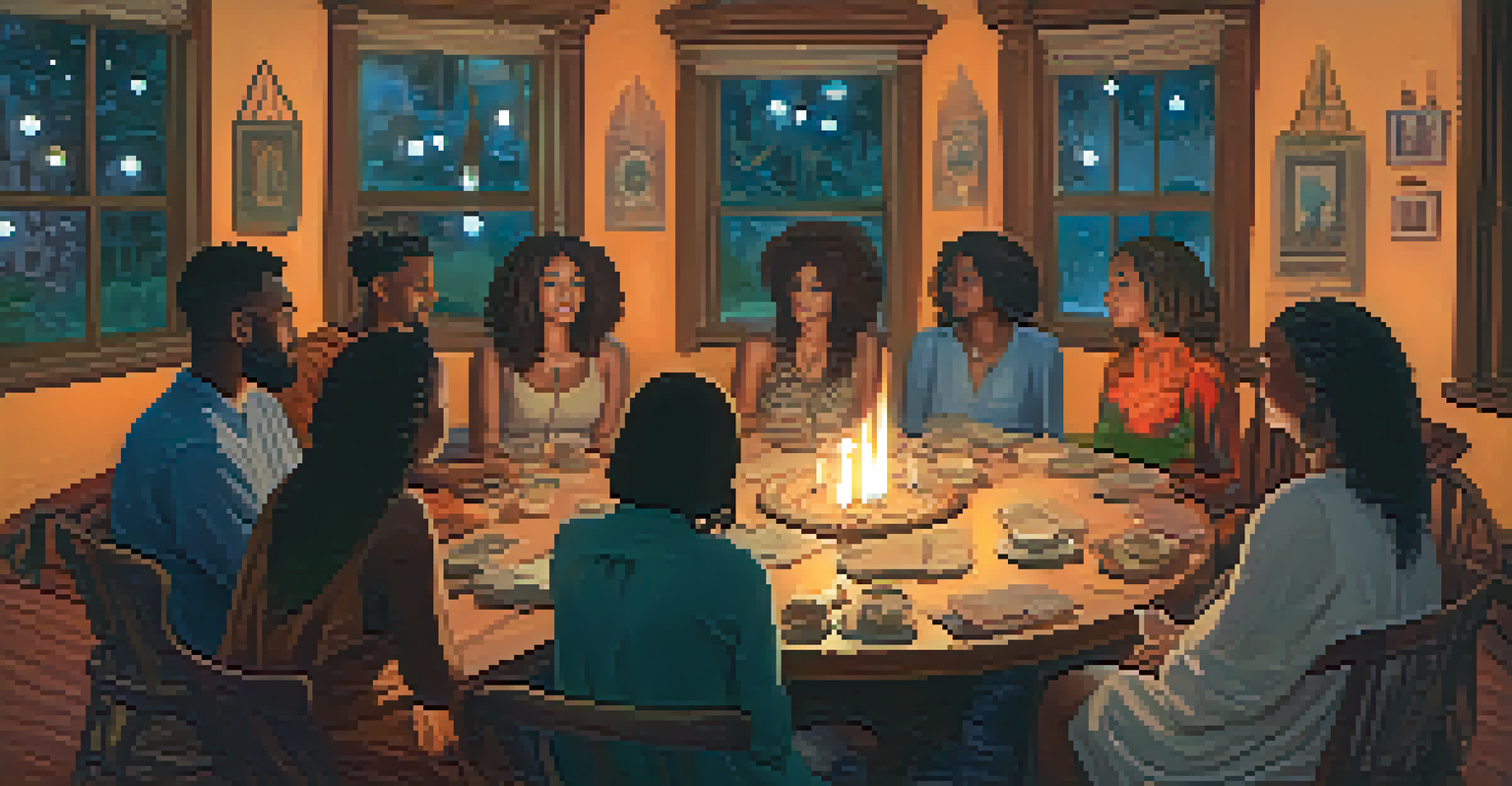Cultural Perspectives on Dreams and Entheogenic Plants

Understanding Dreams Across Different Cultures
Dreams have fascinated humanity for centuries, serving as windows into our subconscious. Many cultures perceive dreams as messages from the divine or as prophetic visions. For example, in Indigenous cultures, dreams often play a crucial role in guiding decisions and understanding one's place in the universe.
Dreams are the touchstones of our character.
In contrast, Western cultures have historically viewed dreams more as psychological phenomena, a way for our minds to process daily life. Yet, this perspective is shifting, with an increasing interest in the spiritual and symbolic meanings of dreams. This duality showcases how cultural contexts shape our interpretation of these nightly narratives.
Ultimately, understanding dreams goes beyond mere psychology; it's about exploring the rich tapestry of beliefs that different societies weave around them. This exploration opens the door to deeper insights into human consciousness and our shared experiences.
The Role of Entheogenic Plants in Dreaming
Entheogenic plants, such as ayahuasca and psilocybin mushrooms, have been used for centuries to facilitate spiritual experiences and enhance dream states. These plants are often consumed in ritualistic settings, aiming to connect individuals with their inner selves and the universe. In many Indigenous cultures, these substances are considered sacred tools for healing and enlightenment.

When ingested, entheogens can alter perception, leading to vivid dreams or even dream-like states during waking hours. This phenomenon raises intriguing questions about the nature of consciousness and reality. Some users report experiencing profound insights or visions that feel as real as their daily lives, blurring the lines between dreams and reality.
Cultural Views on Dreams
Different cultures interpret dreams uniquely, with some seeing them as divine messages while others view them through a psychological lens.
Thus, the relationship between entheogenic plants and dreaming is not just about altered states; it's about deepening one's understanding of existence and connecting with a greater narrative. This intersection becomes a fertile ground for exploring how cultures integrate these experiences into their worldview.
Cultural Rituals Surrounding Dreams and Entheogens
Many cultures incorporate rituals that honor dreams and the use of entheogenic plants, creating a communal space for exploration. For instance, in some Amazonian tribes, the consumption of ayahuasca is not merely an individual experience but a collective journey, often accompanied by singing and storytelling. These ceremonies help participants navigate their dreams and visions together, reinforcing community bonds.
The greatest discovery of my generation is that a human being can alter his life by altering his attitudes.
In Western contexts, while the rituals may differ, there's a growing trend to create sacred spaces for exploring entheogenic experiences. This can involve guided meditations or group discussions aimed at interpreting dreams and visions. Such rituals underscore the importance of community and shared understanding in processing these often profound experiences.
Rituals serve as a bridge between the physical and spiritual realms, allowing individuals to share insights gained from their dreams and entheogenic experiences. This sense of belonging can amplify the personal revelations that arise from these practices, enriching both individual and collective understanding.
Dreams as a Gateway to Entheogenic Experiences
For many, dreams serve as a precursor or invitation to explore entheogenic plants. People often report receiving messages or guidance in their dreams that lead them to seek these experiences. This connection suggests that dreams and entheogens may share a deeper, intrinsic link within the human psyche.
Moreover, some cultures encourage dream journaling as a way to track these messages, fostering a greater awareness of one's spiritual journey. By documenting dreams, individuals can identify patterns or themes that resonate with their experiences with entheogens. This practice not only enhances self-awareness but also helps in preparing mentally and emotionally for the journey ahead.
Entheogens Enhance Dream States
Entheogenic plants can deepen dream experiences, leading to profound insights and altering perceptions of reality.
The interplay between dreams and entheogenic experiences highlights how our subconscious can guide us toward profound transformations. This relationship invites individuals to explore their inner worlds, paving the way for enhanced spiritual growth and understanding.
Symbolism in Dreams and Plant Experiences
Both dreams and entheogenic experiences are rich with symbolism, often reflecting inner thoughts, fears, and desires. In various cultures, symbols encountered during these experiences are interpreted to reveal deeper truths about oneself. For instance, a recurring symbol in dreams might be seen as a guide, pointing toward unresolved issues or aspirations.
In entheogenic experiences, participants often encounter vivid imagery and archetypes that can be equally symbolic. These symbols can serve as mirrors, reflecting one's emotional state or life circumstances. Understanding these symbols requires a willingness to engage with and reflect upon the experiences, fostering personal growth.
By exploring the symbolism in dreams and plant experiences, individuals can gain valuable insights into their lives. This exploration encourages a dialogue with the subconscious, promoting healing and self-discovery in a way that resonates across cultures.
Cultural Attitudes Towards Entheogens and Mental Health
In recent years, there has been a resurgence of interest in the therapeutic potential of entheogenic plants, particularly in relation to mental health. Many cultures have long recognized these substances as healing tools, using them to address issues like depression and anxiety. As scientific research catches up, there's a growing acknowledgment of their potential benefits.
However, cultural attitudes toward entheogens can vary widely; some view them as sacred, while others see them as dangerous or taboo. This dichotomy shapes how societies approach mental health and wellness. In cultures that embrace entheogens, they are often integrated into holistic healing practices, creating a more comprehensive approach to mental well-being.
Rituals Foster Community and Insight
Cultural rituals surrounding dreams and entheogens create communal spaces for shared exploration and understanding of personal experiences.
This evolving conversation around entheogens and mental health invites us to reconsider conventional treatment modalities. By learning from different cultural perspectives, we can broaden our understanding of healing and the potential role entheogens can play in supporting mental health.
The Future of Dreams and Entheogenic Exploration
As society continues to evolve, the exploration of dreams and entheogenic plants is likely to gain even more prominence. With increased interest in spirituality and self-discovery, individuals are seeking deeper connections to their inner selves. This trend could lead to a resurgence of traditional practices that honor both dreams and entheogens.
Moreover, advancements in technology and research are opening new avenues for understanding the mechanisms behind dreams and the effects of entheogens. This could foster a more scientific approach to these experiences while still respecting their cultural significance. As we bridge the gap between science and spirituality, exciting opportunities await.

Ultimately, the future of dreams and entheogenic exploration promises to be a rich tapestry of cultural exchange, scientific inquiry, and personal growth. As we navigate this journey, we may uncover new layers of meaning that connect us to ourselves and each other.